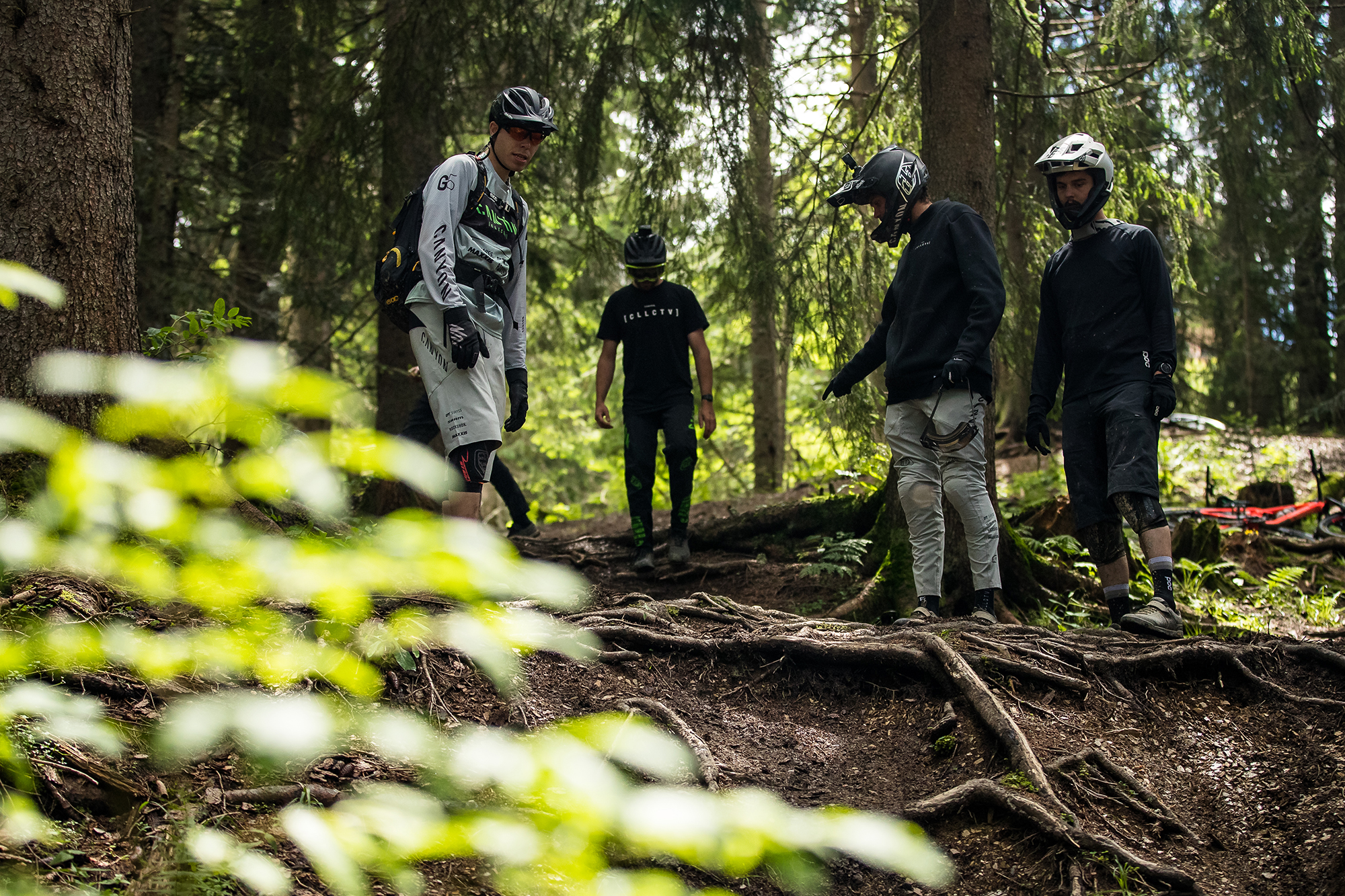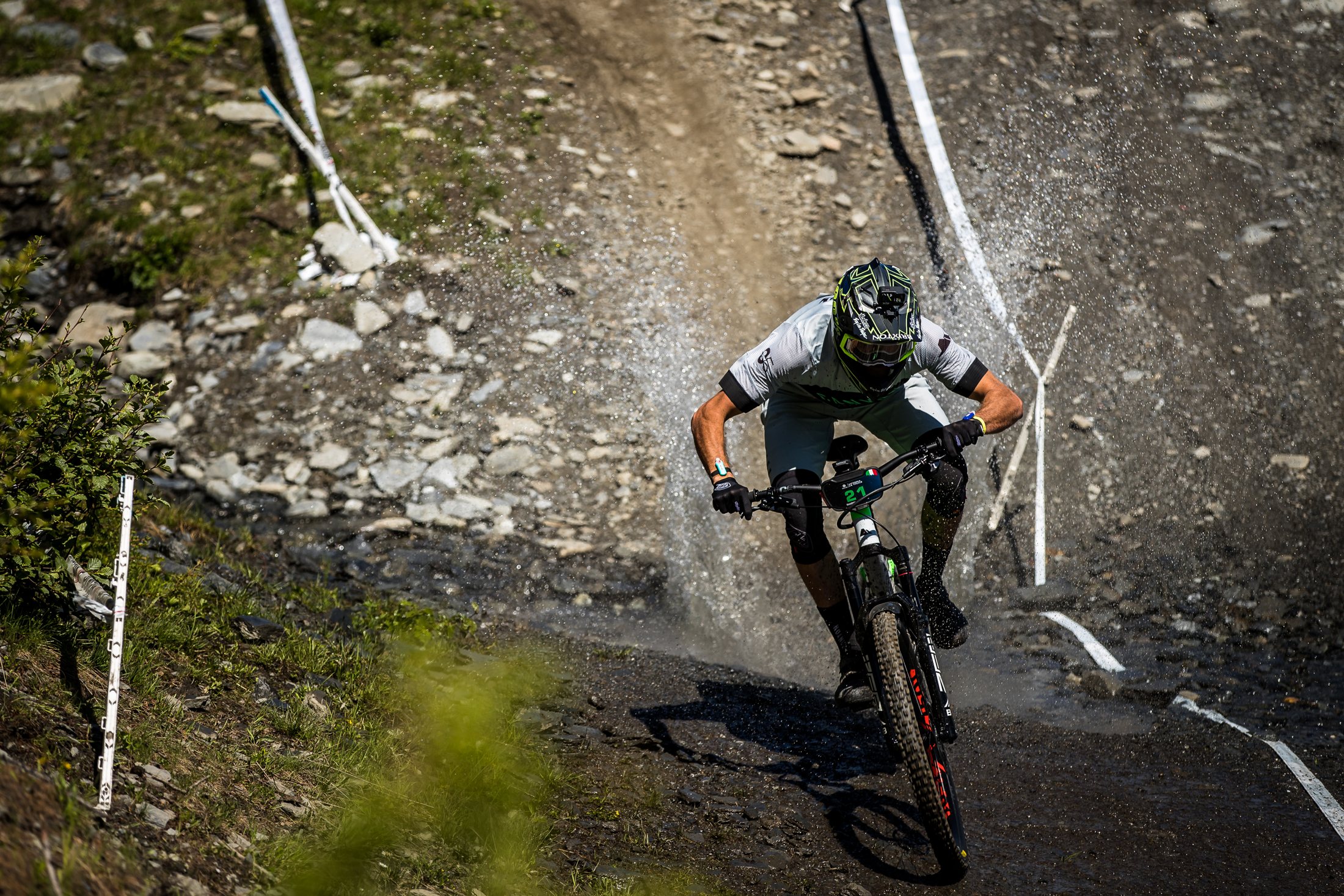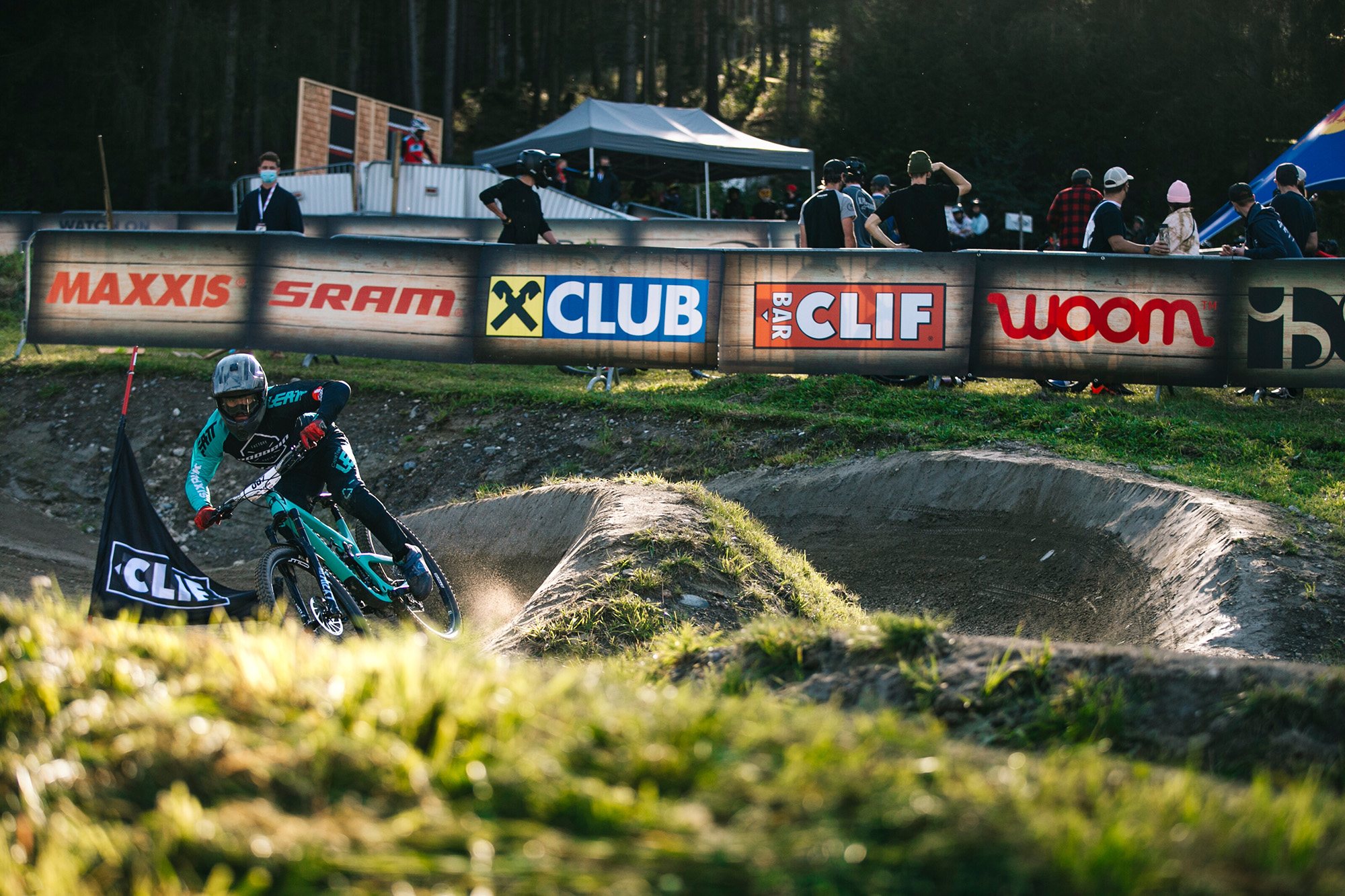Whether it’s the tech, team rumours, or just watching our friends pin it as fast as possible on the big screen, one thing for certain is that we are massive racing fans at [R]evolution. Downhill racing is the pinnacle for finding the maximum speed possible on a bike. At the same time, Enduro brings together the best bike handlers in the world to racecourses blind.
When we watch these men and women go as fast as possible, we often wonder how they can read the track while hitting warp speeds. Do you remember that game of cards you used to play with your nanna at the coffee table? The one where you have all the cards face down and try to match the cards based on your memory? Are these athletes basically playing that game as they pinball down a hill at 40+kph?
This got us thinking, what techniques do these athletes use to learn a track? What processes do they follow throughout a race weekend? Do they have any unique insight into how we can learn tracks as well as they do? There is no better way to answer these questions than to round out some of the fastest in the world and delve deep into their racing processes.
Nathan Rennie was once quoted as saying, “the race begins from the moment you drive through that gate.”
No matter how small it is, everything has to be in line for an athlete to perform at their peak, to focus on one task, memorizing the track.
When we went ahead and got some info from the fast guys, we found that this statement was true in many ways.
Luke Meier Smith says that he wants to “switch on as soon as the weekend kicks off, with both DH and enduro. It’s really about finding a good flow and focus no matter what happens throughout the race weekend”. It’s no surprise that Jack Moir likes to “make sure everything is in order” but also loves to “keep it cruisey and have fun with the boys”.
Try a couple of different lines you are unsure of. Sometimes lines will ride completely different to how you think they will. If you’re still struggling, take some time to watch the top dogs and see what they are riding.
Jack Moir
Part of any big race is preparation; we are not talking about training, being healthy or even making sure the bike is right. We are talking about making sure your socks match, have clean underwear or you have your favourite breakfast prepared, all the little things that build up. Connor Fearon stated that “I actually try to do anything except think about the race… I get really nervous, so I try to take my mind off the job at hand for as long as possible”. Which is a whole different approach altogether.
Once all the kit is lined up and the small ducks are in a line, it’s time for a track walk. Track walk is an integral part of the weekend as it is often the first time a rider sees a track. During this walk, riders study every rock, root and corner they want to hit or miss.
While DH or Enduro wins may seem like an individual achievement, the team is often behind this. Track walk is a team task and Connor sums it up perfectly “I always go with our team do it all guy Antman. He is really good at looking at lines, so we both know the track and it’ll make sense when he tells me to try this line, jump that rock or so and so are doing this line. It also makes sense to walk the track with your mechanic so he understands what you might need from your suspension for the weekend”. When it comes to Enduro, Moir mentions, “It’s also way better having good company when you are walking for hours”.
But surely these guys can’t remember everything after one track walk? Well, Connor says that he “kind of focuses on the small things, but not by actually looking at it on track walk. I’m a guy that builds speed slowly over the weekend and I probably do more practice runs than the average racer. By the time racing comes around, I’ve learnt where every single root, rut and rock is from riding it”. In contrast, Luke says, “as you get to know every little bit of the track more in DH, the more you can memorize every little bit better on track walks”.
The riders cannot possibly memorize everything on a 30km plus track when it comes to Enduro. We asked Jack if he manages to remember every Enduro track, his reply was, “Haha, no way. Sooo many tracks and sections to memorize after 1 run at an EWS. You just have to get good at reading the terrain on the fly and try to remember sections that could catch you out”.
Connor and Luke both race the EWS series and to back up what Jack said. It is all about memorizing the key sections and relying on your ability to ride on the fly. While Connor admits he hasn’t mastered this one yet, he does make a good point “you would be surprised at how fast you can go down a track blind when the clock is ticking!”
If you don’t really know what you’re looking for, just hit the mainline with confidence. There’s no reason why you can’t achieve a good result bombing the mainline.
Connor Fearon
When it comes to finding key sections, riders actually use the process of elimination. They ignore the sections where they are confident they can ride blind. Critical sections are everything that is left over. Suppose you have ever watched the practice sessions at a world cup or EWS practice recap. In that case, you can often see these sections easily as many riders are stopped watching. Although key sections may only make up 10 to 15 percent of a track, a lot of time can be lost if they are messed up.
Even though DH is on the same track and they are getting shuttled to the top I was blown away by how few runs the guys were doing. However, there were some differences in styles when it came to utilizing the runs. Connor mentioned, “I probably do about 12 before the final race run. For the first day, I spend quite a bit of time watching others on tricky bits of the track”. Whereas Luke Meier Smith has a different approach, “I usually like to do as many as I can until I am comfortable and confident with my lines and riding. Usually, like 6 on practice day and then 2 before seeding and racing. I don’t really spend much time watching others; just try and concentrate on myself.”
Knowing the terrain and trusting your skills and knowledge, also really looking ahead and going off what you memorized from the GoPro clips, you’re never really finding the 100% limit on every section like DH, so finding a good flow of speed is significant.
Luke Meier Smith
Technology gives riders a huge advantage these days as all riders have a camera in their pocket, whether it is a phone or a GoPro. Luke Meier Smith makes the most out of this technology, stating, “yes, I always take some photos on track walk just to try and get everything in my head as quickly as I can, and what lines I want to try” for DH. When it comes to Enduro, he says, “without a GoPro while practising the stages, you will struggle to remember anything really. It is definitely a pretty crucial tool when you only have one run”. Jack Moir is also in the same boat.
Connor is almost the opposite for DH, saying that he “never felt that helps him personally’. When asked about Enduro, “I do use a helmet cam for Enduro, but I usually can’t tell the difference between watching it once and watching it 10 times. So I just watch all the tracks once over and try to soak in as much as I can”. He seems to rely on his natural abilities and progressing throughout the weekend instead of cramming and getting confused.
Now, we love watching those Jack Moir edits where he finds some creative lines and makes us wonder why the laws of physics don’t apply to him. Jack states that “It just depends on the track; if there are creative lines that I think could be faster, then I will give them a go”. Fearon makes a lot of sense when he says, “Honestly these days the level is so high everybody figures out these creative lines and in racing 99% of the time the mainline is the fastest”. I am sure creative lines either look complicated or fast to us, but when you have the best in the world all riding together, most riders will find the quickest line if it is worth it.
There are so many ways to skin a cat when it comes to learning the track and practising throughout a race weekend. It is a part of a process that begins before some riders have even stepped out of the car. I know what you all want to see how you can get faster and learn lines effectively. So here are some quality tips from the best in the world. [R]






